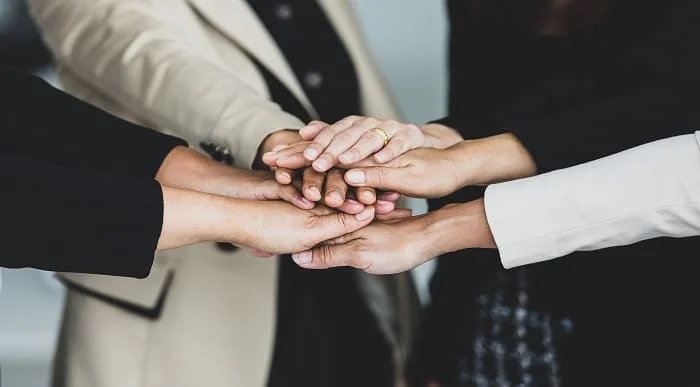Counselling & Psychology
How to Address The Power Imbalance in Counselling?
The dynamics of power in counselling and psychotherapy refer to the fact that helping professionals naturally have more power and influence over the people they assist. As a result, the therapy may end up being ineffective for the client. But many people have no idea how to address the power imbalance in counselling.
This blog aims to provide a rough guide on power differential in counselling so you can start from somewhere. However, it’s up to you to develop your techniques the rest of the way. But remember, everything starts with a single step. Let this content piece be the first stepping stone for you.
But in case you need us to shed a little more light on definitions, here’s a brief explanation for you.

Table of Content
What is Power Imbalance in Counselling?
In terms of power, a therapist’s therapeutic relationship with a client is inherently uneven. These inherent power differences between counsellor and client aren’t unnatural. It’s by design. A therapeutic alliance involves a patient’s decision to participate in a connection intentionally set up to be asymmetrical. This means only the patient will make themselves emotionally exposed within this interaction.
So, the client transfers some power to the therapist, which the therapist then uses to assist the client in achieving self-empowerment.
If the therapist then somehow takes societal power dynamics into account, this power imbalance might obstruct therapy. So, what are some of the examples of these societal power dynamics?
- Race
- Socioeconomic status
- Sexual orientation
Considering any or a combination of all the factors mentioned above will obviously hamper a therapeutic relationship. Whereas these should never come as a factor to ‘consider’. A patient’s race, for example, has nothing to do with their mental health unless it has a link to their biology, like genetics.
When a dominant culture member disregards the client’s own beliefs and perspectives, the power imbalance can become exploitative.
Therefore, therapists should acknowledge and explore the power dynamics within each client-therapist relationship. For example, therapists need to learn about the people’s cultures they will be counselling.
Conditioning has an impact on the therapeutic viewpoint. Privileges can frequently invade the client-therapist relationship, preventing therapeutic bonding. If these things can be addressed right at the start of the therapy sessions, they’ll stop being an issue.
So, how to deal with this power imbalance?
How to Deal with Power Imbalance in Counselling?
Right at the start, we have to acknowledge the fact that a therapist is not invulnerable. You can quickly rid the uneasiness that the power imbalance may create if you’re aware of the facts.
Firstly,
A therapist can easily be a more vulnerable person in their personal life than a patient. Not every patient’s psychological solidity is less than that of a therapist. The therapist may deal with issues in their personal lives, and that’s perfectly normal.
In fact, many therapists are really vulnerable individuals. But, this does not make them any less professional or capable at work. It has no bearing on their talent or knowledge either. In reality, a wounded healer who is one step ahead of a patient in need of healing is often far more helpful than one who is speaking to a patient from the summit of a mountain.
Second,
Sometimes, a patient requires protection from some therapists who may jeopardise their inner world. Likewise, a therapist also requires protection from some patients who may jeopardise their personal and professional integrity.
So, if you’re well aware of these facts, it can lead to a high level of transparency between the client and the therapist.
The therapist or the counsellor can use a variety of tactics to try to decrease the power imbalance.
So, let’s talk about a few of these.
Reduction in the Use of Technical Jargon in Language
The use of technical jargon merely serves to reinforce the client’s position of inferiority. Therefore, the counsellor should keep the language at a level that corresponds to the client’s intellectual competence.

Certificate in Counselling Skills Online Training Course
Misunderstanding
Any misunderstanding should not be blamed on the client by the counsellor. Instead, the counsellor should reword their statement so that the client can clear any misunderstanding by themselves.
Atmosphere
The counsellor can also adjust the atmosphere in which the therapy takes place. For example, the counsellor should consider giving therapy in a setting comfortable for the client.
Interaction
The seating arrangement should be face to face, with the seating level on an equal level, and the counsellor should not be able to look down on the client. This sets a conversational tone that will help the client feel at home.
Avoiding Personal Relationship
The therapist should also avoid any personal or sexual relationship with the client as it risks putting both of them in an inelegant situation.
Top Courses of this Category
FAQs
How can power differences be reduced in Counselling?
The first step in reducing power imbalance in counselling is identifying that it’s not a problem at all. It’s there by design. Both the counsellor and the client have to work together to work around this imbalance so that it doesn’t bother them.
What is power in counselling?
In counselling and psychotherapy, the dynamics of power refers to how helping professionals inherently have more influence and control over the clients they work with.
How do you challenge a client in counselling?
Counsellors are encouraged to avoid pressing clients to suit their demands rather than the client’s. So, challenging should be done with empathy at all times.
How do you manage resistance in counselling?
Please refer to the question above.
How do counsellors deal with difficult clients?
Counsellors remain calm and cool-headed with difficult clients. They assess the situation and adapt accordingly so that the client receives the therapy they need regardless of how difficult they appear to be.
Do therapists really have more “Power” than their clients?
They do, and it’s by the design of the therapy. So don’t count it as an issue as a professional counsellor will always use their power to your aid, not the reverse.
Conclusion
The power dynamics that exist in the therapeutic relationship elevate the therapist to a position of authority. The counsellor has a better insight into the relationship from this vantage point. As a result, the counsellor can steer behaviours to suit their own selfish needs. This is why therapists should always be aware of how to address the power imbalance in counselling. It’s worth mentioning that the counsellor and client are likely to cross paths outside of professional settings. But, the counsellor must always protect the client’s interests, regardless of whether the counsellor’s interests are jeopardised.
What to Read Next:
- What is the Difference Between Coaching and Counselling? Know the Truth
- What is Guidance and Counselling? Importance of Guidance and Counselling
- How to Become a Counsellor Without Going to University
- What are the Advantages and Disadvantages of Individual Counselling?
- What are the difference between directive, non directive and eclectic counselling
- What is Supervision in Counselling: A Comprehensive Guide
- How to Become a Psychology Teacher?










